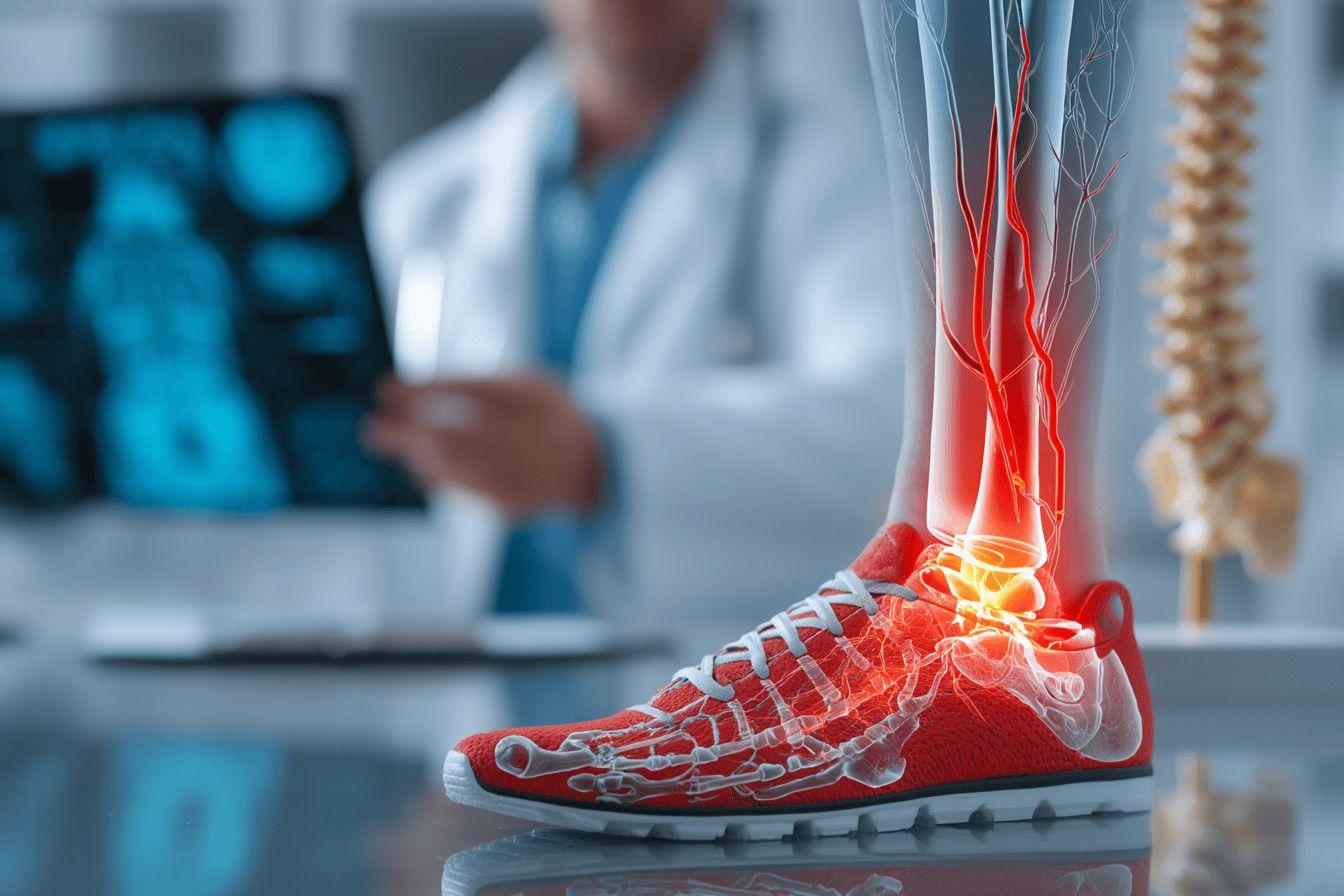Article at a glance
Tingling in the foot associated with sciatica disrupts the daily lives of many people suffering from nerve problems.
- Mechanism: Compression of the sciatic nerve causing paresthesia and pain radiating from the back to the foot
- Main causes: Lumbar disc herniation, lumbar spinal stenosis, piriformis syndrome, and neuropathy
- Effective solutions: Anti-inflammatories, physical therapy with specific exercises, complementary approaches such as acupuncture
- Prevention: Maintenance a healthy weight, regular physical activity, and ergonomics adapted to the workplace.
Experiencing tingling in the feet accompanied by sciatic pain can seriously disrupt your daily life. These unpleasant sensations affect many people and can signal various nerve problems. Understanding their origins and knowing the appropriate solutions is essential to regaining comfortable mobility.
Understanding the link between sciatica and tingling in the feet
Sciatica is characterized by pain radiating along the sciatic nerve, the largest nerve in the human body. This nerve starts in the lower back, crosses the buttocks, and descends down each leg to the feet. When it is compressed or irritated, symptoms such as shooting pain and unpleasant tingling can appear.
Tingling in the feet, also called paresthesia, is often a symptom indicative of sciatic nerve damage. These particular sensations give the impression that insects are moving under the skin or that the foot is gradually becoming numb. In some cases, numb toes are the first warning signs of a sciatica problem.
Several mechanisms explain this association between sciatica and foot paresthesia:
- Direct compression of the sciatic nerve (by a herniated disc or stenosis)
- Inflammation of the surrounding tissues irritating the nerve
- Excessive stretching of the nerve during certain movements
- Nerve damage due to an underlying pathology
Scientific research shows that more than 40% of sciatica patients report tingling in their feet. This high prevalence underlines how interconnected these two problems are. Renowned neurologist Dr. Sarah Martinez explains: "The sciatic nerve carries sensory information from the feet to the brain. Any disruption along its path can cause these abnormal sensations distally."

Main Causes of Tingling in the Feet Related to Sciatica
Sciatica, which causes tingling in the feet, usually results from compression of the nerve at a specific point along its path. Among the most common causes are:
A lumbar disc herniation is the most common cause. When an intervertebral disc shifts or ruptures, it can put pressure on the sciatic nerve. This compression partially interrupts the transmission of nerve signals, creating the characteristic tingling sensations that can particularly affect the left foot or right foot, depending on the affected side.
Lumbar spinal stenosis is also a common cause in people over 50. This progressive narrowing of the spinal canal compresses the nerves and causes tingling, which generally intensifies during prolonged walking or standing.
Postural and muscular disorders can also trigger these symptoms. Prolonged contraction of the piriformis muscle, located in the gluteal region, sometimes compresses the sciatic nerve, leading to the so-called piriformis syndrome. This condition regularly causes tingling in the left or right foot.
| Cause | Characteristics of tingling | Aggravating factors |
|---|---|---|
| Herniated disc | Intense, accompanied by sharp pain | Coughing, sneezing, bending of the back |
| Lumbar spinal stenosis | Progressive, often bilateral | Walking Prolonged, back extension |
| Piriformis syndrome | Variable, often after sitting | Prolonged sitting, sports activity |
| Diabetic neuropathy | Permanent, burning sensation | Hyperglycemia, nighttime |
Certain systemic diseases such as diabetes complicate the clinical picture by causing neuropathies. In these cases, the tingling may be accompanied by a burning sensation or persistent numbness in the big-toe and other toes.
Effective Solutions for Relieving Tingling in Sciatica
When faced with tingling in the feet caused by sciatica, several therapeutic approaches can provide significant relief. These treatments aim to reduce inflammation, decompress the nerve, and restore normal nerve function.
Conventional drug treatments are often the first line of action. Nonsteroidal anti-inflammatory drugs (NSAIDs) such as ibuprofen reduce inflammation around the nerve. For more severe pain, doctors sometimes prescribe muscle relaxants or specific medications for neuropathic pain such as pregabalin.
Physical and postural approaches play a crucial role in long-term treatment. Physical therapy, which includes targeted exercises, can strengthen back muscles and improve posture. Specific stretching techniques, such as those developed by American physiotherapist Robin McKenzie, have proven effective in relieving pressure on the sciatic nerve.
Here are the most recommended exercises, to be practiced gradually:
- Lying lumbar extensions (10 repetitions, 3 times a day)
- Piriformis stretches (hold for 30 seconds, 5 repetitions)
- Strengthening the deep abdominal muscles (transverse abdominis)
- Gentle foot joint mobilizations to improve circulation
- Sciatic nerve stretches (sciatic nerve gliding technique)
Complementary approaches such as acupuncture and osteopathy offer encouraging results for some patients. A meta-analysis published in 2023 confirmed that traditional acupuncture could significantly reduce sciatica symptoms, including tingling in the feet, in nearly 70% of treated patients.
In the most severe and persistent cases, surgical interventions such as discectomy or laminectomy may be necessary. These procedures aim to directly eliminate the cause of the nerve compression. Neurosurgeon Dr. Michael Chen, however, clarifies: "Surgery remains an option of last resort, to be considered only after the failure of well-conducted conservative treatments."
Adopting daily preventive habits greatly contributes to limiting recurrences. Maintaining a healthy weight, engaging in regular physical activity, and adapting your workstation are essential elements of this comprehensive preventive strategy.




Leave a comment
This site is protected by hCaptcha and the hCaptcha Privacy Policy and Terms of Service apply.